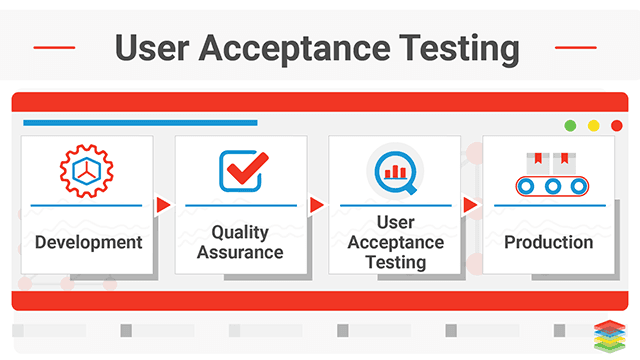UAT stands for user acceptance testing and is also known as application testing. It is a phase during the software development where the software is tested by the audience in the real world. During the software testing process, UAT is the last phase. It is performed before the software is released in the intended market. The purpose of UAT is to make sure that the software is able to manage real-world tasks.
In UAT user acceptance testing, the users get the opportunity of interacting with the software before it gets officially released. This helps them see if any feature has been overlooked or if the software contains bugs. UAT can be performed in-house with the help of volunteers via paid test subjects by making the test version available for download as a free trial. The results obtained from these testers are forwarded to developers. They further make the changes and offer final touch before the software is released commercially.
UAT helps in making sure that the software meets quality concerns and also increases transparency with users. UAT allows the developers to work with real data and validate business needs.
What Is The Purpose Behind UAT?
The main aim of UAT is a validation of the testing done at the end of the development cycle. UAT is performed after various phases such as unit testing, system testing, quality assurance, and integration testing. The software might undergo various other testing phases and be functional but still might not meet the requirements if it fails to get a positive reception from the users.
This might happen if the software was not yet ready for testing in the real world. UAT offers protection against faulty, unfinished, or ineffective software products from getting released.
In order to be effective, UAT must be thorough and also reflect the user’s needs. It should identify potential issues that are not yet detected in the previous tests. Without UAT, the tested software might get released with bugs or with a lack of clearly defined goals. These issues might be costly or damage the vendor’s reputation.
Who Performs UAT?
It is the end users that perform UAT as they are an effective group for testing any software. They are the ones who know how the software is going to be used on a routine basis. They can perfectly figure out what changes are required to be made to make the software suitable.
Internal functional experts have a role to play in UST. They help in shaping UAT and test management along with interpreting the results.
What Are Different Types Of UAT?
- Beta testing
- Black box testing
- Operational acceptance testing
- Contract acceptance testing
- Regulation acceptance testing
How Is UAT Performed?
- Planning
- Identifying and creating real-world test scenarios
- Selecting the testing team
- Test and document
- Update code and retest
If you are looking for automation of UAT, Opkey’s end-to-end test automation solution is a perfect choice! It offers optimal test coverage and makes sure that UAT testing has the correct scope.












